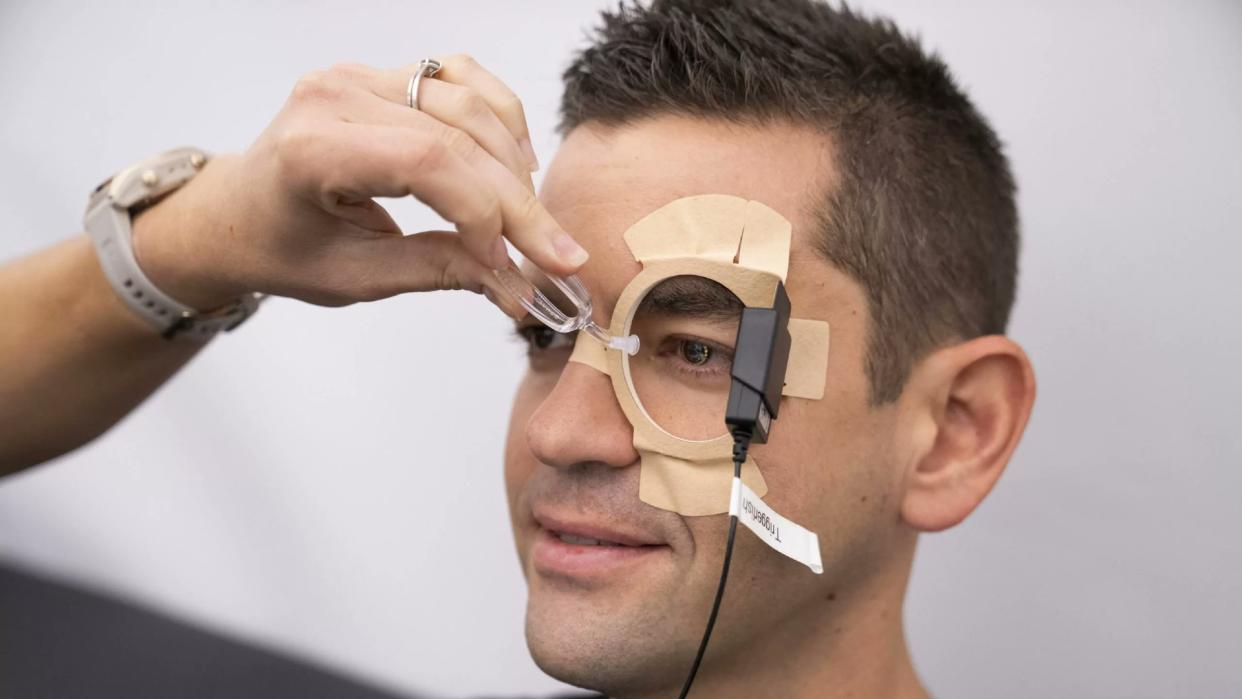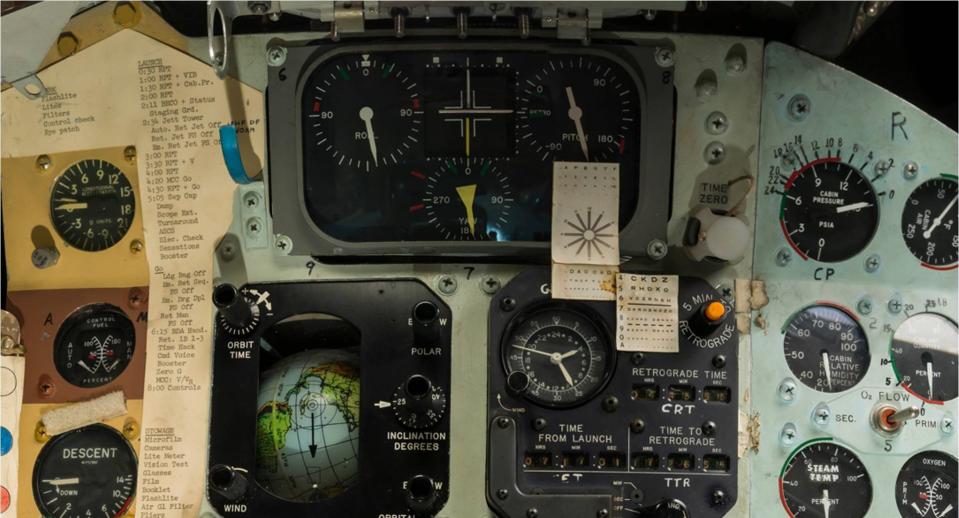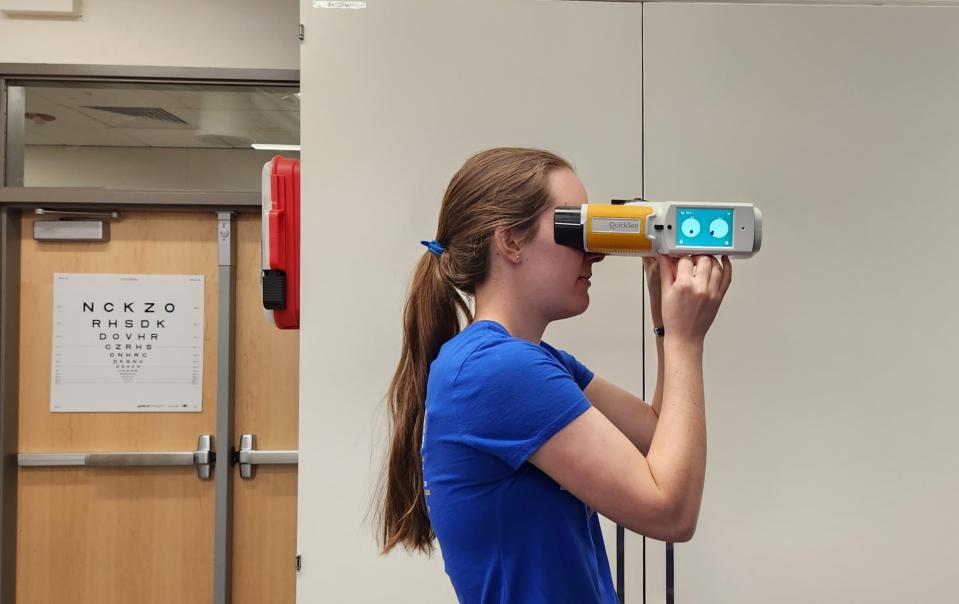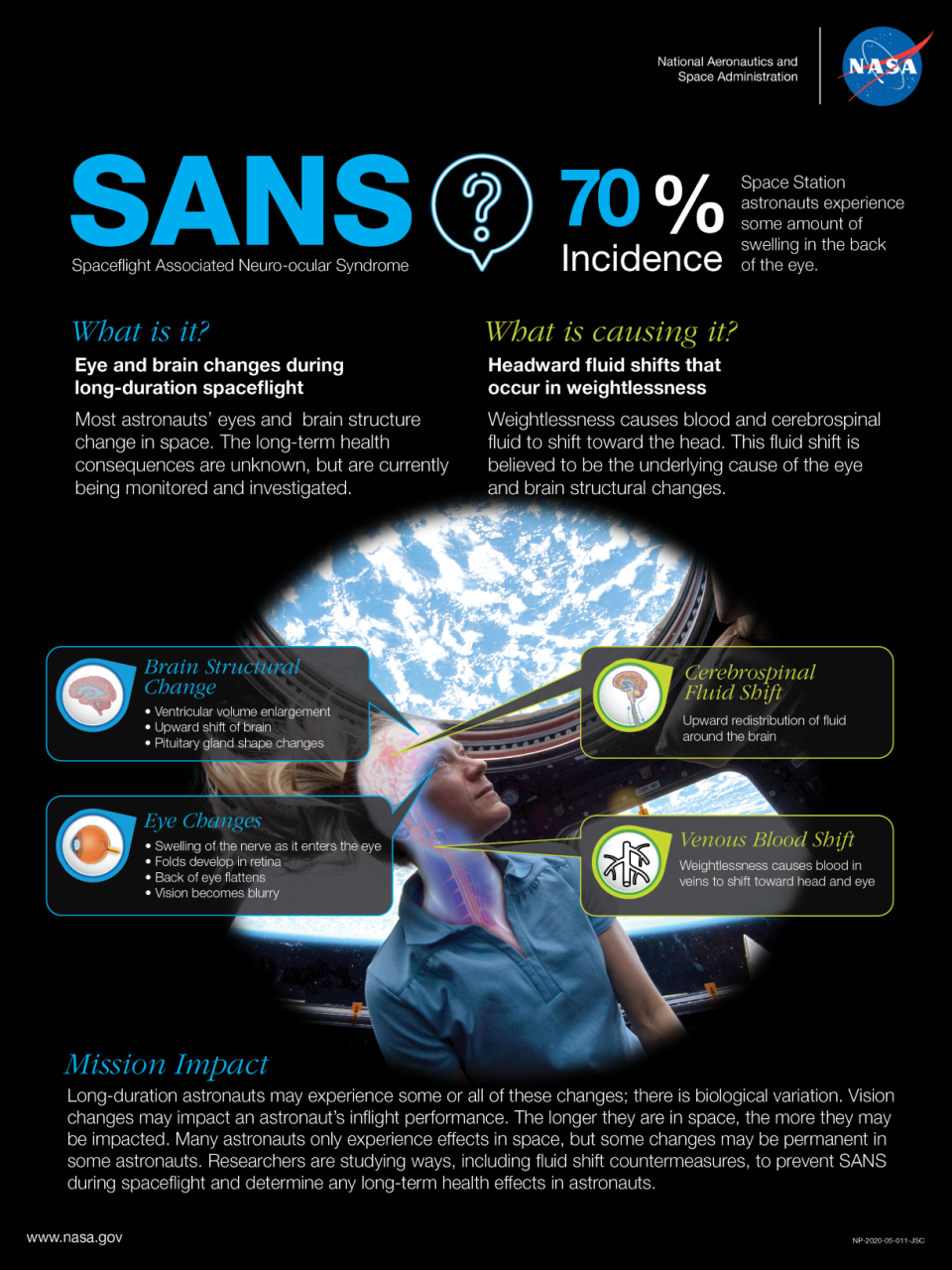The eyes have it! Scientists focus in on how microgravity changes astronaut vision

- Oops!Something went wrong.Please try again later.
After decades of collecting data about how astronauts' vision is affected by spaceflight, scientists have identified a set of microgravity-induced changes to the human eye known as Spaceflight-Associated Neuro-Ocular Syndrome, or SANS. This condition is considered a risk to human health in long-duration spaceflight.
Later this year, a SpaceX Falcon 9 rocket will hurl the Polaris Dawn mission of four crew members skyward for a privately-backed voyage of up to five days in Earth orbit. During their stay time circuiting our planet in a Crew Dragon capsule, the high-flying team is dedicating major time to probe health impacts on the body from their sojourn into space.
One of their medical tasks is specific to help unravel what's behind SANS symptoms. It is a known, unknown issue, say researchers, a malady that includes swelling of the optic nerve, alteration in the shape of the eye itself, as well causing fuzziness to vision. Clearly, on any lengthy trek to Mars and back, being "blindsided" by blurry eyesight from SANS is not ideal.
Related: Polaris Dawn: The trailblazing commercial mission of the Polaris Program
Ongoing research
As for its cause, SANS is tied to the absence of gravity's effects on the body, causing a fluid shift that can generate pressure changes in the brain and eye. This fluid shift is thought to be the basic cause of the eye and brain structural changes. But identifying the exact why and when SANS crops up — and what countermeasures can be applied — is prompting ongoing research.
Making it all the more perplexing, NASA says that signs of SANS appears in roughly 70 percent of Earth orbiting astronauts, but with significant individual variability.
Overall, clarity over vision issues in space has come a long way since the February 1962 flight of Mercury astronaut John Glenn. That first three-orbit spaceflight by an American had Glenn dutifully monitoring his vision by reading an eye chart to see if his eyeballs might change and alter his vision.

Cyborg study
Allie Anderson is a leading SANS investigator in the College of Engineering & Applied Science at the University of Colorado, Boulder. She has been working with the Polaris Dawn crew to help examine the timing of spaceflight-induced changes to the human eye through continuous monitoring of intraocular pressure, the pressure within the eyeball.
Anderson's study involves a Sensimed-produced "Triggerfish" contact lens that has an embedded strain gauge to measure how the cornea changes shape over time. The contact lens contains a tiny antenna to transmit its data and will explore how the front part of the eye changes with microgravity exposure. The Polaris Dawn crew calls it "the cyborg study."
In addition, Anderson's SANS research has the crew using a device built by PlenOptika — a portable, handheld autorefractor — to measure how a person's corrective eyewear prescription changes while in spaceflight.

Validate technologies
"Using both of those devices, we want a better understanding of the time course for how the eye adapts in microgravity," Anderson told Space.com. "For long-duration astronauts, they were getting structural changes, like flattening of the eye that resulted in a shift in their vision, as well as swelling at the optic nerve head. It wasn't completely clear why that was happening."
One other goal of the SANS work is to validate low mass, low power technologies for space missions. "We want to get as much data as possible and to obtain measurements as early in flight as possible," Anderson said. "It's a good opportunity for people in the community to collaborate and share data and hopefully contribute to understanding the problem," she said.
Anderson underscored NASA's tackling of SANS. "They are doing a ton of work to settle on what the definition of having SANS is and how to grade the severity of it," she said. "It's an interesting challenge to get your head around, that's for sure."

Earth benefits
With astronauts projected to take longer and longer space trips in the future, SANS countermeasures is a key next step, said Prem Subramanian, a professor of ophthalmology, neurology, and neurosurgery at the Sue Anschutz-Rodgers University of Colorado Eye Center in Aurora, Colorado.
Work is progressing on trying to figure out what's causing SANS and associated spaceflight-caused eye changes, but more research is essential.
Theories based on what is being observed could be totally wide of the mark, Subramanian advised. A better understanding of the forces that cause SANS is critical to direct the development of SANS countermeasures, he added.
"We have to figure out how to reduce the incidence of the problem, probably before we even fully understand what's causing it," Subramanian told Space.com. "The inability to really recreate it here in a terrestrial environment is a major barrier. We've got models, but the models are not great and they are limited."
RELATED STORIES:
— Possible Mars Mission 'Showstopper': Vision Risks for Astronauts
— New Tech Could Protect Astronauts' Eyes on Mars Mission
— Under Pressure: Why Spaceflight Is So Hard on Astronauts' Eyes
In addition to the attention given to SANS as a space traveler's dilemma, there are also notable benefits from this research for the gravity-bonded majority of us here on Earth.
"There are terrestrial diseases that cause optic nerve swelling and vision loss," Subramanian added. "A better understanding of how to treat this condition will improve our understanding of things that happen back here on Earth … those patients who develop similar increased intracranial pressure problems, say from trauma or a disease, or from a variety of other things," he concluded.
Follow us @Spacedotcom, or on Facebook and Instagram.

